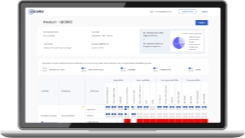
An Executive Director has a huge role in various organizations. They normally report to the Board of Directors in modern organizations, who are also responsible for appointing them in both private and public organizations worldwide. Currently, there is a very high demand for corporate governance professionals, who have a great demand across all professions.
Executive Directors are senior managers responsible for carrying out the daily operations of an organization. They normally head government agencies, non-profit organizations, and various international organizations. According to Bureau of Labour statics (.gov)reports, The demand for executive directors will be at a growth rate of 4% from 2019-2029..
Executive directors are highly rewarded in terms of salaries and other privileges. They are employed full-time, require advanced experience, and carry full responsibility for the overall business operations and performance.
With a basic understanding of the role of Executive Director, let us dive deeper into this role and understand the skills required, and their responsibilities. The blog can be a great guide to aspirants of the Executive Director’s role.
What Does an Executive Director Do?
Executive directors are responsible for administering and organizing the daily operations of the organization. This will ensure that targets are met, quality standards are maintained, and budgets are adhered to. They can also create, monitor, and report on departmental business plans. They also assess the project's performance, key personnel, and departments, and ensure that the goals have been achieved. They provide feedback for negative results, guide in corrections, and ensure that standards are adhered to.
A bachelor's degree in business administration or any other related field is a requirement for an executive director. A master's degree is sometimes a requirement. They are also required to have years of experience in similar roles. An executive director must know the industry’s legal framework, best practices, and trends, and know diverse principles and functions like human resources, finance, supply chain, and customer services. Also, an executive director needs to have a working knowledge of performance metrics and data analysis
An executive director’s job involves organizing, planning, and directing the operations and programs of the organization, developing and implementing cost accounting policies, inventory consistency, procedures, and operational metrics on reporting. They report to the senior managers on the company’s overall results. They also identify, recruit, train, and develop a team of talented employees who can eventually lead crucial departments and manage strategic business functions.
Their primary values lie in creating strategic plans, providing strategic leadership, managing operations, developing visions and goals, setting priorities, and acting as a link between the board and the rest of the organization.
According to the Franklin University Career Guide 2023 report, in the United States, 8% of executive directors can be found working in local government. This excludes education and hospitals. 6% of executive directors work in the management of companies and enterprises, and 52% work in computer systems designs and related services. 4.7% work in management, scientific, and technical consulting services. 4.5% of executive directors work in education and hospitals under local government. 4% work in state government excluding education and hospitals, and 67.1% work in other industries.
In-demand specialized skills today for executive directors that are based on 83,738 job postings are finance, marketing, project management, accounting, and auditing. Common skills are communication, management, leadership, operation, and customer service.
With the basic knowledge of the roles of an executive director, we can now introduce the core business of this blog: The Executive Director’s key role and responsibility.
%2520(1).webp)
Key Skills Required for an Executive Director
7 Key Roles and Responsibilities of an Executive Director
Executive Directors in the organization have distinct requirements. They are high ranking company executives. Their primary roles range from major corporate decisions, acting as the main point of communication between the board of directors and the corporate operations, and driving the workforce and resources of the company towards a strategic goal.
A study from Harvard Business Review analyzed that the Executive Directors spend 23 hours in meetings per week. 61% of this time is spent on face to face interaction, 24% is spent on electronic communications, 15% is spent on phone calls, reading and written correspondence, and less than half (47%) is done at the company's headquarter.

Lets now delve deeper into the roles and responsibilities of Executive Directors:
1. Strategic Planning:
Executive directors play a crucial role in the strategic planning of an organization. These roles are classified as follows:
- Setting the Strategic Directions: This means that they define and oversee the strategic planning process and ensure that an organization's goals are met.
- Providing Information: They are charged with providing relevant information concerning the organization and the external environment. This can be year-end reports, data reports, and demographic details.
- Evaluation and Monitoring: They work with other organizational leaders in evaluating the performance of the overall strategic plan.
- Getting Everyone Aligned: They use the process of strategic planning to ensure that all the team are aligned with the management team's direction.
- Time Management: This can be done by prioritizing through setting goals and organizing tasks by importance, planning, which involves making a list and creating schedules, delegating work to subordinates, limiting destruction, breaking time into manageable sections, and tracking time by ensuring that you know how long each task takes.
2. Managing Resources:
Executive directors are charged with the responsibility of overseeing a company's resources. This role is called managing resources and includes:
- Assessing Needs: The strength of the organization is evaluated, opportunities and needs are also assessed.
- Resource Allocation: Decisions are made on how to allocate funds, time, and staff to make maximum impact and waste minimization.
- Strategic Planning: This involves working with leaders and includes evaluation and monitoring of its performance.
- Decision-making: This includes decisions like fundraising, budgets, market trends, and strategic plans.
- Project Management: Project risk management, providing leadership, assigning resources, and project office management.
- Developing Policies and Procedures: This involves setting the policies for the organization.
- Building the Organizational Culture: By engaging with all internal and external stakeholders and promoting the organizational culture.
- Reporting the Company’s Results: This is done to senior management.
3. Staff Management:
Executive directors have the responsibility of identifying, recruiting, training, and developing a highly talented pool of employees and they perform this through:
- Evaluating Staff Performance: This includes employee productivity assessment and productivity.
- Feedback Provision: This includes offering direction and development opportunities.
4. Policy Implementation:
The company’s overall policies are usually implemented by executive directors. They do this through:
- Developing Policies: They develop policies and procedures and promote their adoption.
- Working with the Board: They work with the board of directors in creating strategic plans that guide the activities of the organization.
- Overseeing Operations: This includes day-to-day operations, including program implementation.
- Managing Staff: Oversee staff, including task delegation and providing clear direction.
- Managing Relationships: They manage relationships with external stakeholders, including the private sector, government officials, and international organizations.
- Driving Growth: Ensuring that teams achieve the set goals by offering overall direction.
5. Feedback:
Executive directors are charged with the responsibility of reporting back to the management and other stakeholders. They do this through:
- Receiving Feedback: They need feedback on their work, understanding when they are doing well and when they need to improve.
- Providing Clear and Useful Feedback to Employees: They should provide clear and constructive feedback to employees to foster improvement and growth.
- Participation in Performance Evaluation: They should participate in performance evaluation, as this is a key part of the board's responsibility to monitor performance.
- Setting Goals: They should set goals for the organization and also for themselves to ensure progress and achievement.
- Sharing Accomplishments: They should share their accomplishments during performance evaluations to highlight successes and contributions.
- Focusing on Professional Development: They should focus on all areas of professional development to enhance skills and growth.
6. Collaboration:
Executive directors must collaborate with the board of directors for the smooth creation and implementation of strategic plans. This is done through collaborating with the company leadership. Implementing strategic planning of the organization and stakeholders' relationship management
7. Quality Assurance:
To ensure that all the company’s programs run smoothly, executive directors must perform quality assurance all the time. They can do this through:
- Quality Standards: Ensuring that products, services, and processes meet customer expectations and standards.
- Regulatory Compliance: Ensuring compliance with industry standards and regulatory requirements.
- Quality Assurance Strategy: Creating and executing the organization's QA strategy and vision.
- Quality Assurance Staff: Monitoring quality assurance staff through hiring, coaching, and training.
- Quality Assurance Processes: Developing and implementing quality assurance policies, procedures, and standards.
- Quality Assurance Documentation: Writing and updating quality assurance procedures.
- Quality Assurance Reports: Compiling product and process quality reports.
- Quality Assurance Improvements: Identifying areas for process improvement and implementing strategies to enhance product quality and customer satisfaction.
- Quality Assurance Collaboration: Collaborating with cross-functional teams to address quality-related issues.
Executive Directors and Stakeholders Satisfaction
It is important to note that the role of executive director varies depending on the company's size, and corporate culture. Large corporations normally deal with high-level strategic decisions and those that directly influence the company’s growth. Executive directors are supposed to increase stakeholder engagement through proposal presentations to them, ready to communicate the ambition of the organization, and available to address any concern or question directly.
Stakeholder engagement is one of the critical components that affects every organization's performance. Managing stakeholders and strategies is essential for every business and the executive director should make sure possible outcomes and more business. The process involves:
- Identifying all relevant stakeholders.
- Analyzing their needs and expectations.
- Determining the best strategy and protocols to engage with them.
Stakeholders groups include the shareholders of the company, the directors and management of the company, the company’s employees, customers of the company, suppliers of the company, trade unions, communities in which the company operates, the government and the pressure groups, and the activist groups, such as environments.
A feature of corporate governance or strategic analysis in any company is the balance of power between the stakeholder groups and the relative power and influence of each group. The Mendelow Framework can be used to understand the influence that each stakeholder group has over a company’s strategy and actions.
Various Types of Executive Directors
The following are the various types of Directors found in Organization:
1. Non-Executive Directors:
They normally don't participate in the daily operations of the organization. They normally provide advice to the board. They perform the following:
- Providing Oversight: Monitoring the management's activities and ensuring that the management of risk guidelines are followed.
- Offering Guidance: Providing mentorship to the executive team.
- Acting in the Company’s Interest: Directing the management where necessary and ensuring that the company maintains the highest ethical standards.
- Having Specialized Knowledge: Bringing expertise in areas like marketing, finance, etc.
2. Executive Directors:
Responsible for running the business, managing people, recruitment, and signing contracts. Their roles and responsibilities have already been analyzed.
3. Nominee Directors:
They are usually appointed by the employees, shareholders, employees, or debenture holders of the company. They play the following roles:
- Legal Requirements: They are usually appointed to meet legal requirements, such as being a resident director of the company.
- Representing Shareholders: They represent the interests of shareholders and other stakeholders.
- Non-Executive Role: They do not actively manage the daily operations of the company. They follow the activities of the director’s instructions.
- Legal and Fiduciary Duties: They have legal duties like other directors of the company but are required to act in the appointer’s interest.
- Independence: They are free to exercise their best judgment, which is not influenced by their nominators.
4. Managing Director:
Always termed as Chief Executive Officer (CEO) and he is the most senior in the organization. In larger organizations. Managing directors lead and manage one specific business unit, while executive directors are tasked with the responsibility of overseeing the overall business operations across
5. Additional Director:
Usually appointed by the board of directors. It is usually done in a hurry just before a general meeting can take place.
- Benefits: They are appointed to take advantage of specialized abilities and expertise.
- Appointment: They are appointed by the Board of Directors at any time. This can be done through board meetings, held in person, videos conferencing, or other audio visual machines,
- Team: their terms ends in the next annual general meeting.
- Role: they attend board meetings, they are not key managerial personnel.
Frequently Asked Questions
Conclusion
Executive directors are increasingly becoming relevant in every industry as they are involved in the daily operation of the business. They develop strategic plans to be utilized for short and long-term goals.
To ensure a high level of productivity, Executive directors should demonstrate the following:
- Consistency in Leadership: So as to inspire team members to have confidence.
- Communication skills should be top-notch so that the stakeholders can understand their roles and the active projects in progress.
- Good working experience in the field.
- Have a good focus on achieving the organization's goals,
Skilled executive directors should bring leadership, strategic planning, exceptional interpersonal skills, excellent understanding of finance and business administration to the organization.
For any business wishing to remain competitive and agile, there is a need to invest in top leaders who play a big role in an organization's success.
Edstellar is one of the companies that is into the business of delivering tailored corporate training programs designed to elevate the expertise of Executive Directors. By leveraging a comprehensive skills matrix, organizations can identify critical skill gaps, craft targeted development plans, and drive impactful talent transformation.
Edstellar empowers Executive Directors to excel in complex environments, enabling them to deliver data-driven insights, optimize processes, and align solutions with business objectives. This approach ensures sustained growth, innovation, and a competitive edge for organizations.
Explore High-impact instructor-led training for your teams.
#On-site #Virtual #GroupTraining #Customized
Edstellar Training Catalog
Explore 2000+ industry ready instructor-led training programs.

Coaching that Unlocks Potential
Create dynamic leaders and cohesive teams. Learn more now!


Want to evaluate your team’s skill gaps?
Do a quick Skill gap analysis with Edstellar’s Free Skill Matrix tool

Stay informed on L&D best practices
Get periodic updates on learning and development industry trends, expert insights, success stories and innovative training practices from Edstellar.
.svg)
Featured Post
.webp)
Contact Us
Submit your Training Requirements below and We'll get in touch with you shortly.
.svg)



.svg)


.svg)

.svg)
.svg)
.svg)

